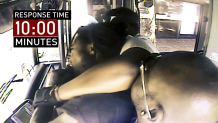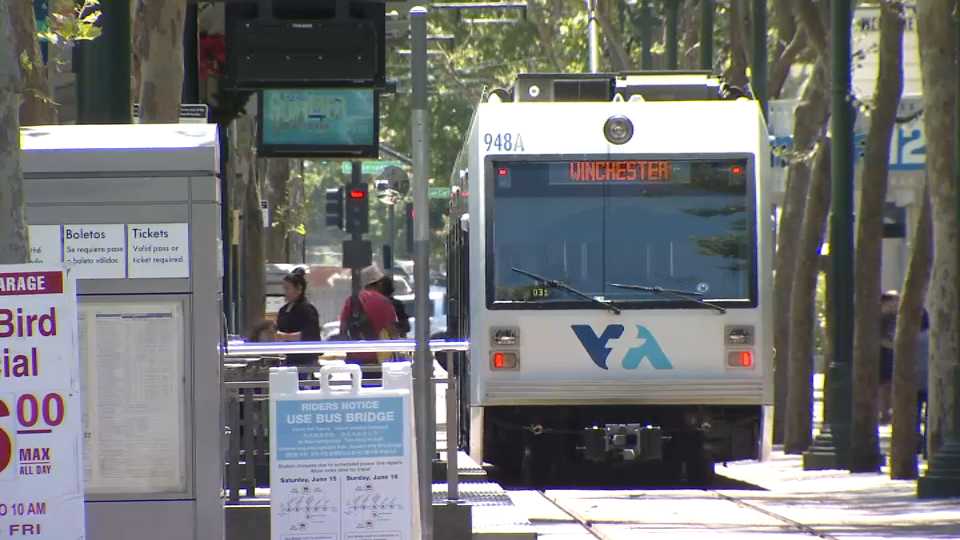AC Transit bus operators are calling for changes to an emergency call system they believe wastes valuable minutes, putting everyone’s safety at risk. In February, the NBC Bay Area Investigative Unit found a steady increase in the number of reported assaults against bus drivers in the East Bay. Now operators tell the Investigative Unit the recent rise in incidents underscores the need for drivers to have a direct line to law enforcement.
NO DIRECT LINE TO CALL FOR HELP
Danny Marshall is the assistant business agent for Amalgamated Transit Union Local 192, the union that represents more than 1,300 bus operators. Any time a driver is attacked, he gets a call.
Marshall explained the current procedure for drivers to call for help when caught in the snarl of an angry passenger.
“There's not a direct line that goes directly to the sheriff,” Marshall told NBC Bay Area. Instead, drivers must call AC Transit’s Operation Control Center (OCC), which handles everything from mechanical problems to emergencies.
“When we call OCC, which is our dispatcher, realize that OCC has to take that information and then call the [Alameda County] Sheriff’s dispatch. Then once they call the Sheriff’s dispatch, that dispatch has to notify the officer,” Marshall said.
NBC Bay Area reviewed more than 200 videos since 2014 showing drivers call for help after an alleged assault. In those tense moments after the initial call, we observed drivers getting punched, bitten, kicked, and choked in melees that often forced other passengers to get involved.



NO RESPONSE
Video also showed some drivers had trouble getting any response at all.
Local
“I hit the button, they don’t never answer the freaking phone,” one driver complained after trying to report a passenger for making repeated sexual advances.
Some responses were so slow, even the passengers noticed.
“The response is slow,” one passenger told the operator as they waited to report an attack on the operator and other passengers.
“I hit this button, I hit that button, don’t nobody call, nobody asks no questions,” the driver complained to passengers as they waited for help.
However not all responses were delayed. Video we reviewed showed quick responses can make a big difference.
In one instance, a sheriff’s deputy sprinted on scene one minute after the driver’s call for help. He was able to stop the attack.
But situations like that are rare, according ATU Local 192 Safety Committee Chair Nathaniel Arnold.
“I myself have been a victim. I've been spat on and I've actually had a gun held out to me,” Arnold said.
To combat slow response times, Arnold and other drivers have started riding each other’s buses on certain routes to help in case of an emergency.
TIMELINE OF REPORTED ASSAULTS
SAFETY AND SECURITY AT AC TRANSIT
In February AC Transit Chief Operating Officer Salvador Llamas told NBC Bay Area his agency contracts with at least 34 Alameda County Sheriff Deputies to respond to emergencies. However the district does not keep track of those response times.
NBC Bay Area asked whether operators have the ability to contact police directly during an assault.
“The only way they can talk to our dispatch is through the radio system inside the bus,” Llamas said.
“We do not have a cell phone for them to use. The reason why we want them to use the radio is because that is a central hub that gives a location of the bus, the routes, the bus number, they can get an immediate idea where the vehicle is at so they can convey that to our road supervision and to our law enforcement, Llamas explained.
Buses are also equipped with a panic button that alerts the control center there’s an emergency and allows dispatch to locate the bus and listen to what’s happening. However drivers told NBC Bay Area they rarely use it because it cuts off their ability to talk to dispatch or give a suspect description.
Operators say they want management to hear their concerns and help improve response times because when drivers aren’t safe, passengers aren’t safe.
In the meantime, following questions from NBC Bay Area in February, AC Transit is in the process of installing a prototype shield around the driver seat on certain bus to test whether it will provide any additional protection.
If you have a tip for Vicky Nguyen about this or any other story, you can email her directly at vicky@nbcbayarea.com or you can email theunit@nbcbayarea.com or call 888-996-TIPS.
Follow Vicky Nguyen on Twitter www.twitter.com/VickyNguyenTV and Facebookwww.facebook.com/VickyNguyenTV



